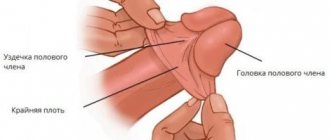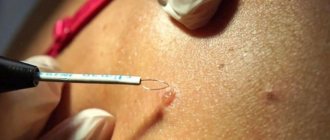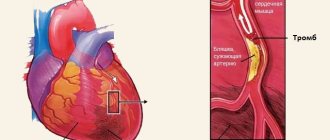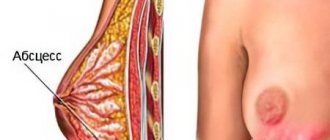Phased changes
The rehabilitation period after rhinoplasty depends on the complexity of the operation.
So, if the defect is small, the patient will receive minimal injuries. With a complex of corrections, the area of soft tissue, bones and cartilage is affected. Therefore, recovery time increases and discomfort becomes stronger. Rehabilitation is also influenced by the individual characteristics of the body, the method of implementation, materials, and compliance with the doctor’s recommendations.
How does the nose change after rhinoplasty, when is the result visible and what could be the consequences?
At the beginning
Medication-induced sleep is often used. So, immediately after the procedure the patient recovers from anesthesia. He feels nausea, drowsiness, weakness, dizziness. After the anesthetics are removed from the body, the condition improves. The sensations at this stage depend on the successful selection of the drug and dosage.
To reduce discomfort before plastic surgery, premedication is done - preparation with medications for surgery and anesthesia. Without appropriate help, broken capillaries in the eyes, nosebleeds, and severe pain are possible .
The result of the operation cannot be seen immediately. After suturing, medical tampons - turundas - are inserted into the nose. They help reduce swelling by absorbing secretions. Modern materials that are similar to turundas are silicone splints or hemostatic collagen sponges. They allow you to breathe after surgery because they are installed with an air duct. Modern materials are easy to remove - they do not stick to the mucous membrane.
On top - fix an overlay made of plastic or plaster. However, plaster bandages are often abandoned, since if the swelling quickly disappears, the splint will have to be placed again . After a major operation, it is painful and traumatic. Plastic fasteners are more gentle. They will help protect the tissues formed by the surgeon from external influences.
You can learn more about the stages of rhinoplasty, how preparation, surgery and rehabilitation take place in our special material.
In the first days
In the first days after surgery, the patient is prescribed painkillers and antibiotics that will prevent fever and inflammation. The doctor selects medications individually, the form of administration is injections.
Due to swelling, the face looks frightening and the eyes appear swollen . Dark circles are visible around them. Possible visual impairment. The cheeks may also be swollen. The nose may become numb.
On day 3, vision returns to normal and the pain subsides. According to reviews, the first 2-3 days after surgery are the hardest.
To 10
- If turundas are installed in the nasal passages, they are removed on the fourth day. Because of the swelling, you won't be able to breathe yet.
- After 5-7 days, the amount of fluid in the tissues decreases, swelling gradually disappears, and the face becomes normal. With normal rehabilitation, the pain goes away.
- From the sixth to the eighth days, the splint is changed and the suture is removed (in an open operation). The hematomas gradually resolve and breathing is restored.
- After 10-14 days, the bandages and medical tampons are removed.
Toilet of the nasal cavity at the ENT Clinic of Doctor Zaitsev
Patients often turn to us with a request to resolve the issue of high-quality septoplasty, because they know that we are one of the few clinics in Moscow that offer full coverage of high-quality ENT medical services. But! Our clinic is an outpatient clinic, and even if we wanted to, we would not be able to perform an operation within these walls.
Also, during the operation, there remains a high risk of bleeding - such a surgical intervention requires a separate preoperative room, operating room, postoperative ward, anesthesiology service, special sterility, access control, etc.
We are ready to offer all this, but within the walls of an ENT hospital
Our clinic employs excellent professional ENT surgeons - some of the best specialists in Moscow in their field, who are ready to help you quickly and efficiently.
Please sign up for a consultation and come! We will individually select for you the best ENT hospital and the best ENT surgeon! And you will definitely be satisfied with the result of the operation!
And you can undergo postoperative treatment and observation in our clinic at the best prices. Our highly qualified ENT specialists will provide you with complete rinsing of the nose and cleaning of the nasal passages - in a word, they will provide all the necessary postoperative measures for complete care after surgery. Regular clients of the clinic note the accessibility and high quality of our services compared to similar private clinics in Moscow.
Certificates and licenses
Phone numbers for scheduling a consultation and +7 (926) 384-40-04.
We are always glad to see you!
Source: www.lor-moscow.ru
Natural Side Effects
Natural side effects may occur during the recovery period:
- redness;
- swelling;
- temperature;
- bruises;
- pain in the nasal passage;
- headache.
However, statistics show that side effects are observed in 10% of those treated.
Redness
The skin of the nose turns red after surgery infrequently, but a side effect cannot be excluded. The doctor warns the patient about redness during the consultation. You can predict the effect by learning about the reaction of the skin of the nose during sudden changes in temperature. Complications are likely with repeated plastic surgery .
Edema
Swelling after plastic surgery always remains. They are divided into postoperative (about ten days) and stable (up to six months). However, those around you do not see persistent swelling, since visually they do not affect the new shape of the nose. The occurrence of a side effect depends on the method and duration of the operation.
To speed up soft tissue recovery after an osteotomy (a procedure to cut through bones), the doctor applies a brace and a cold compress, and then elevates the patient's head. Homeopathic ointments will help remove swelling, but you should consult your doctor.
You can find more information about swelling after rhinoplasty here.
Temperature
How long does the temperature last? The temperature will increase after plastic surgery of the nose . On the first or second day the indicator will not be below 37 degrees. However, elevated body degrees depend on the characteristics of the body. So, a thermometer can show from 37.5 to 38.
A further increase in heat indicates an inflammatory process in the wound area. In this case, urgent consultation with a doctor is necessary! On the fifth day the indicator should settle. Doctors recommend monitoring the process and recording numbers every day.
Bruises
Bruising occurs immediately after surgery . They are local and located in the wound area. After removing the fixator, blue hematomas will become visible. Their occurrence is associated with an incorrectly placed fixing bandage. This factor causes blood clots in these areas. Homeopathic ointments will also help get rid of bruises.
Pain
Painful sensations in the nose after surgical surgery do not occur often and not in all patients. The reasons are non-compliance with the doctor’s rules or a low pain threshold.
Dull and aching pain in the first time after rhinoplasty is a common effect. Soft tissues respond to surgery in this way. How long does it hurt? This should not happen in the future healing process. If there is a stinging or piercing pain, you should consult a doctor, as damage to nerve tissue has probably occurred.
Headache
Should I worry if I have a headache? The first couple of days after rhinoplasty, headaches appear . Then the attending physician prescribes painkillers in addition to all other medications.
Nose care and treatment
After surgery, caring for your nose is important. To do this, use various means: drops, sprays, ointments, solution for rinsing the nasal cavity.
These manipulations are not complicated, they can be performed independently at home.
To facilitate nasal breathing and clear the nose of mucus, rinsing is used. The following medications are used for this:
- Aquamaris is an effective drug containing sea salt. Indicated for both adults and children. Washing with this product can be done up to 4 times a day. To do this, use a syringe, a pear-shaped balloon or a special kettle.
- Aqualor is not inferior in effectiveness to other means. It helps normalize breathing, relieves swelling, and removes nasal mucus.
- Dolphin is a popular solution for rinsing the nasal cavity.
It is effective against congestion, so it can be used to care for the nose after septoplasty. Popular nasal rinses
Ointments are used to remove nasal crusts, prevent cracks, dry mucous membranes, as well as rapid healing. They are prescribed by a medical specialist. Levomekol and Hyparin ointment are considered the most effective.
Ointment accelerates the healing of the nasal septum
https://www.youtube.com/watch?v=ytpolicyandsafetyru
In addition to other medications, vasoconstrictor nasal drops help eliminate breathing problems. The most common are:
- Naphthyzin is a proven remedy that helps with nasal congestion and is not expensive. It should be used after consultation with a doctor, because frequent and prolonged use can be addictive.
- Polydexa - effective drops against rhinitis, used for both children and adults. After surgery, they will help normalize breathing, relieve redness and swelling.
- Flixonase is a popular hormonal drug. Used to treat allergic, vasomotor rhinitis. To be used as prescribed by a medical specialist.
Common Consequences
Callus on the bridge of the nose
The phenomenon of “callus” is rare, but sometimes occurs when bone fiber grows at the site of postoperative injury. A callus or bump on the bridge of the nose appears after rhinoplasty as a result of improper regeneration of bone tissue. The complication is not life-threatening, but requires measures and consultation with a surgeon. If during rhinoplasty the doctor ground down the native bone, then a callus is inevitable.
During the procedure, part of the cartilage or bone tissue is removed . After this, the body’s protective function is activated. Wound healing consists of three stages:
- First, connective tissue forms around the damage.
- A thin layer of bone tissue appears.
- Due to calcium salts, hardening appears, and the bone tissue changes to soft tissue.
The causes of complications are the body’s reaction or the doctor’s inexperience . The result of callus growth is a hump, a deformed nose, and swelling. How to remove callus? To solve the problem, a consultation with a surgeon is necessary, and, possibly, re-plasty. However, sometimes preventive procedures prescribed by doctors can solve the problem.
Different nostrils or asymmetry - is this normal?
Asymmetry of the nostrils after rhinoplasty disappears after six months. A complication arises due to edema, since the blood supply to the face is different from other parts of the body.
The essence of the procedure
Deviation of the internal nasal septum is much more common than we think. According to statistics, only about every fifth person has it perfectly smooth.
Such a defect is quite rare at birth. But by the preschool period, about a third of children have this problem. Some get it due to compression of the face during complicated childbirth. Many babies suffer from falls and minor nose injuries.
Most adults don't even know they need septoplasty. Until they decide to get rid of problems such as snoring, frequent colds and ENT diseases, difficulty breathing, pronouncing words “through the nose.”
They go to an otolaryngologist. And only at his appointment the cause is discovered - an unfortunate curvature of the nasal septum.
Septoplasty helps solve the problem. Depending on the situation, the doctor recommends removing part of the soft tissue, correcting the cartilage, or even filing the nasal bones.
Most manipulations can be performed through the nasal cavity. Therefore, as a rule, there are no external marks or scars left.
How to protect yourself?
To avoid serious complications, doctors recommend following certain rules:
- less active actions, bed rest, the head should be placed on a larger pillow;
- physical activity is contraindicated;
- it is forbidden to go to the pool, sauna or solarium;
- sleeping on your back is necessary (first 14 days);
- Do not eat food that is too cold or hot;
- smoking is prohibited;
- It is contraindicated to wear glasses for 2-4 months.
Final result, before and after photos of women
Operating plastic surgery
The final result after surgical rhinoplasty appears a year or a year and a half after surgery. However, this is only possible if you follow your doctor's recommendations.
No surgery
The non-surgical rhinoplasty method shows results within 3 days after the procedure.
Despite the fact that it does not give a strong transformation, the effect lasts about two years.
Find more information about non-surgical rhinoplasty here.
Types of intranasal splints
Previously, mainly cotton swabs were used in nasal surgery. Cotton inserts are still used today, but not so actively. The plastic surgeon installs them into the nasal passages immediately after closing the surgical wound. The cotton pads are pre-impregnated with hemostatic solutions to minimize bleeding and with an antiseptic to prevent infectious complications.
Today, outdated cotton swabs have been replaced by special designs that are produced by world leaders in the medical products market. They are often called silicone splints, but other names can also be found: rhinological splints, intranasal or intranasal stents, Reiter splints, rhinological plates, inserts or liners.
Special rhinological inlays can have different shapes and other design features. For example, after septoplasty, septal splints and septal plugs are actively used. There are also special stents for the anterior sinus and turbinates. This variety allows the otorhinolaryngologist or plastic surgeon to choose the optimal silicone insert for each type of surgical intervention.
What to do if the result is not what was expected?
If the patient is dissatisfied with the result, he should contact a plastic surgeon . After the consultation, it will become clear whether a repeat operation is needed, or whether other corrective procedures can be used. In any case, it is worth remembering that surgery is a risk.
The decision to undergo rhinoplasty is always made by the patient. When choosing a nose job, you should do your research carefully and then find a professional in plastic surgery.
What is considered a failed rhinoplasty and what to do in this case, we tell you in a separate article.
Execution Methods
Just a few decades ago, the only way to straighten a deviated nasal septum was a standard operation. It was broken, filed, and excess tissue was trimmed with an ordinary scalpel. Needless to say, rehabilitation after such an intervention was long and painful.
Fortunately, modern medicine is developing by leaps and bounds. Today, more and more effective and safe methods of nose correction are appearing.
Depending on the type of defect, the surgeon can use one of the main types of septoplasty:
- Thread resection. It is performed when it is necessary to remove excess soft tissue and tighten the septum. Several strong threads are attached to it, around which connective tissue is gradually formed. After 2-3 months they are removed.
- Laser septoplasty. The laser can be used in different ways: to cut the skin (as a replacement for a regular scalpel) or for a seamless operation, during which the cartilage is softened and the soft tissue is “evaporated”. At the same time, it seals small vessels and capillaries, disinfects the wound and significantly shortens the healing period.
- Endoscopy. A special instrument is inserted into the patient’s nasal cavity – an endoscope equipped with a miniature video camera that transmits the image to a monitor. Thus, the surgeon has the opportunity to control the entire process in detail and perform manipulations with high precision. The endoscopic technique also often uses a laser.
Hospitalization of the patient is not required. Within 20-30 minutes after completion of the procedure, you are allowed to go home.











